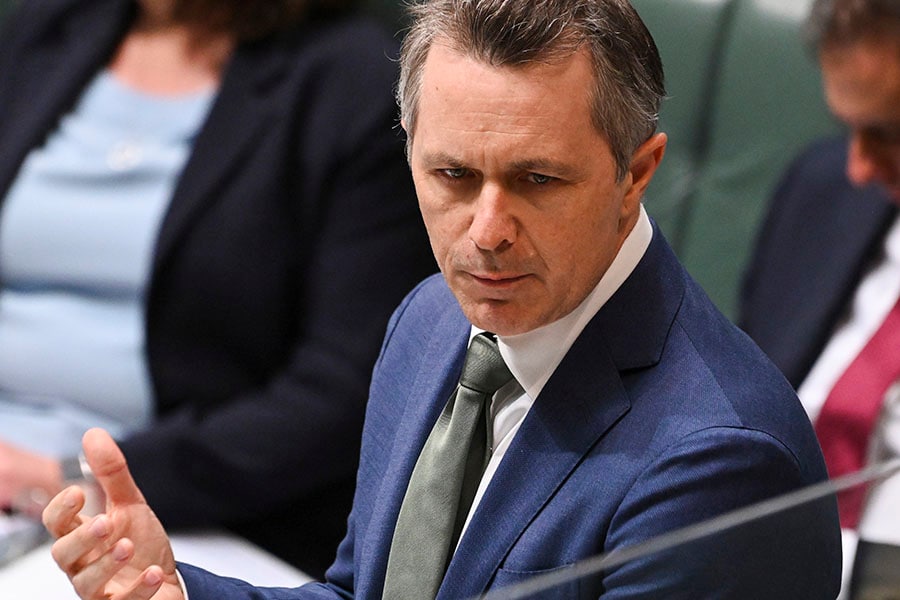
One in 26 Australians can trace their roots back to India: Jason Clare
The Australian education minister speaks on why educational institutes from his country are setting up campuses in India and how Indian students can benefit
 Australia's Minister for Education Jason Clare speaks at Parliament House in Canberra, Australia. Image: Martin Ollman/Getty Images
Australia's Minister for Education Jason Clare speaks at Parliament House in Canberra, Australia. Image: Martin Ollman/Getty Images
During his second visit to India this year, Australia’s Education Minister Jason Clare pointed out that the country has more Indian residents per capita than any other country in the Organisation for Economic Co-operation and Development (OECD). “And that living bridge has helped bind our two countries closer today than ever before,” he said at the Australia-India Institute annual oration held at Gujarat’s Gandhinagar on November 7. The minister was here as part of the first Australia-India Education and Skills Council meeting and launch Australia's Education Strategy for India.
About a million Australians of Indian heritage can trace their roots back to India. “When I say a million, you might think that's a small number. But that's one in 26 Australians,” the minister told Forbes India. “There are more Australians of Indian heritage in Australia as a percentage of the population than any other country in the OECD. This makes it a natural partner for India in business and in all the things we want to work on together.”
According to the country's last census, Indians are now the second-largest migrant group in Australia, overtaking the Chinese and second only to the English. The fresh wave of Indian immigrants has largely been driven by the tech sector, as the country has a high demand for skilled workers. Over 710,000 Indians live in Australia at the moment.
When Prime Minister Narendra Modi visited Sydney in May, both countries announced a migration deal to make it easier for students, academics, and professionals to travel and work in India and Australia. In March, when Australian Prime Minister Anthony Albanese paid his first official visit to India since entering office, the two heads of state discussed defence and security, economic cooperation, education, and bilateral trade. They also signed an agreement for “mutual recognition of Australian and Indian education qualifications” that will be beneficial for the student communities from the two countries, in addition to increasing the presence of Australian universities in India.
“It's November now, and those announcements have turned into buildings,” said Clare, who visited GIFT City (Gujarat International Finance Tec City), where Australia’s Deakin University and the University of Wollongong Indian campuses are being opened and will be operational from the next academic year. These are the first two international universities to be approved to set up campuses in India. According to the minister, the opening of campuses in India highlights that international education is not only a one-way street or about international students coming to Australia, but also increasingly about Australian universities going around the world.








